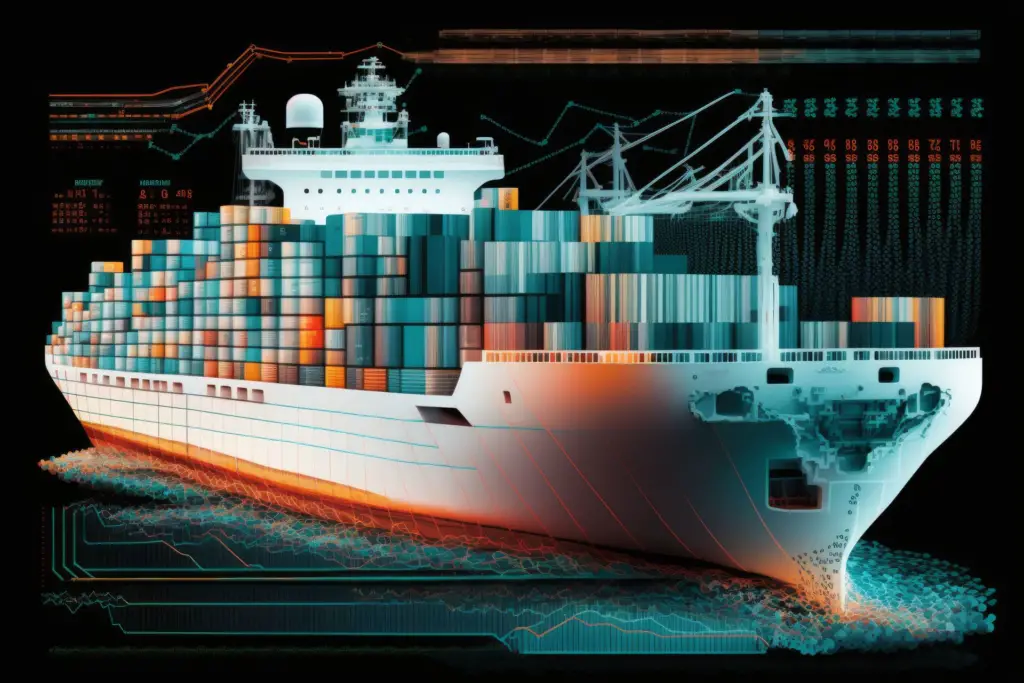The maritime sector, steeped in age-old traditions and historically guided by human expertise and intuition, is witnessing a transformative phase unlike before. As global trade amplifies and shipping routes become more intricate, there’s an insatiable demand for modern tools and methods.

The emergence of real-time AIS data from global data and analytics companies is a testament to this shift. This development presents unparalleled possibilities, coupled with the emerging prowess of artificial intelligence (AI). This dynamic integration sets the stage for innovations that could redefine maritime operations for years to come.
If you’re curious about how AI plays a pivotal role in revolutionizing maritime data, read on to uncover the depths of this technological integration.
Artificial Intelligence’s Impact On Maritime Data Analysis
The role of artificial intelligence in maritime data analysis is reshaping how the industry views and processes information.
Below are the ways AI is making its mark:
- Data volume management: AI excels at handling colossal amounts of data. As AIS data and other maritime information sources multiply, AI tools can rapidly sift through, categorize, and analyze them, ensuring they capture every crucial detail.
- Predictive analytics: Through predictive analytics, AI can forecast trends using historical and current data. This capability helps maritime companies anticipate market changes, vessel performance, and maintenance requirements, enabling proactive measures.
- Real-time response: AI’s ability to process data in real-time means that maritime operations can receive instant feedback. This responsiveness allows for quick strategy adjustments, mainly when immediate action is paramount.
- Enhanced accuracy: AI minimizes human error. By relying on algorithms and historical data, AI can offer more accurate analyses, leading to better decision-making.
- Integration with the Internet of Things (IoT): Modern ships have numerous sensors and devices. AI can seamlessly integrate with these IoT devices, ensuring every piece of information, no matter how minuscule, is considered in the analysis.
Understanding the profound impact of AI on maritime data analysis is imperative for organizations in the maritime industry aiming for efficiency and precision. With AI tools, they gain a competitive edge, ensuring success in riding the wave of technological advancement.
Prioritizing Safety Through Artificial Intelligence
In the maritime world, ensuring the safety of both crew and cargo is paramount, and AI plays a crucial role in enhancing this safety.
Below are the significant contributions of AI in enhancing maritime safety:
- Collision forecasting: AI uses advanced algorithms to predict collision scenarios based on vessel trajectories and movement patterns. With this foresight, vessels can alter routes and avoid potential hazards.
- Weather predictions: Accurate weather forecasting can be a lifesaver at sea. AI analyzes vast meteorological datasets in real time, offering precise weather updates and storm predictions, ensuring vessels can steer clear of treacherous conditions.
- Equipment monitoring: AI can continuously monitor ship equipment, detecting anomalies or malfunctions. This proactive approach means the crew can address potential mechanical issues before they escalate into major problems.
- Emergency response: In emergencies, swift decision-making can make all the difference. AI can simulate multiple response scenarios in seconds, guiding the crew to the most optimal rescue or evacuation procedures.
- Security protocols: With threats like piracy still prevalent, AI can enhance onboard security. Facial recognition, unauthorized access alerts, and surveillance automation are just a few ways AI ensures a tighter security blanket over vessels.
When it comes to maritime operations, every safety enhancement counts. Through AI’s multifaceted contributions, the industry sees a promising rise in security measures, making the seas safer for everyone on board.
Achieving Operational Efficiency
The maritime sector’s operational efficiency is crucial for profitability and environmental sustainability. With the integration of artificial intelligence and the evolving capabilities of the Internet of Things, several avenues open up for streamlining processes and optimizing operations.
Here are the standout ways AI is driving efficiency in maritime activities:
- Route optimization: AI tools analyze weather patterns, maritime traffic, and historical voyage data to determine the most efficient and safe routes, saving time and fuel costs.
- Fuel consumption analysis: By analyzing engine performance, load factors, and sailing conditions, AI can offer insights into fuel-saving techniques and predict optimal cruising speeds.
- Automated reporting: AI can automate reporting tasks, ensuring accurate, timely, and compliant documentation, freeing up the crew for more essential duties.
- Cargo management: AI can predict the best ways to load and unload cargo based on weight, priority, and destination, leading to faster port turnaround times.
- Maintenance predictions: AI predicts when parts are likely to wear out or fail, enabling predictive maintenance instead of reactive actions.
Efficiency isn’t just about cutting costs; it’s about maximizing resources and minimizing waste. By incorporating AI’s capabilities, maritime operations can achieve a level of efficiency previously thought unattainable, setting new standards for the industry.
Navigating The Challenges Of Artificial Intelligence

While the benefits of artificial intelligence in the maritime sector are undeniable, integrating this technology has its challenges. Understanding these potential roadblocks is crucial for successful adoption.
Here are some of the prominent challenges and considerations when introducing AI into maritime operations:
- Data privacy concerns: As AI systems gather and analyze vast amounts of data, ensuring the privacy and security of this information becomes critical. Potential data breaches or unauthorized access can have severe repercussions.
- High initial investment: Implementing AI systems often involves significant upfront expenses. These initial costs, which encompass acquiring the required software, hardware, and training personnel, can be overwhelming for certain businesses.
- Training and adaptation: Introducing AI means crew members and staff need training to utilize these tools effectively. This learning curve can lead to initial resistance or operational hiccups.
- Reliability and dependence: Over-reliance on AI without human oversight can be risky. Systems can malfunction or misinterpret data, so a balance between AI automation and human intervention is vital.
- Regulatory hurdles: Like any new technology, the introduction of AI often moves faster than regulations can keep up with. Managing AI integration’s legal and compliance aspects can be challenging for maritime companies.
While the path to fully integrating AI may have its share of obstacles, being aware of these challenges allows maritime operations to address them proactively. With a balanced approach, the maritime industry can harness the potential of AI while navigating its complexities with precision.
Conclusion
The transformative power of artificial intelligence in the maritime sector offers a glimpse into the future of global trade and transportation. As AI continues to chart new horizons, maritime operations stand on the cusp of unparalleled efficiency and safety. But, like any voyage, challenges await. By acknowledging these and proactively addressing them, the industry can ride the wave of AI-driven innovation.










